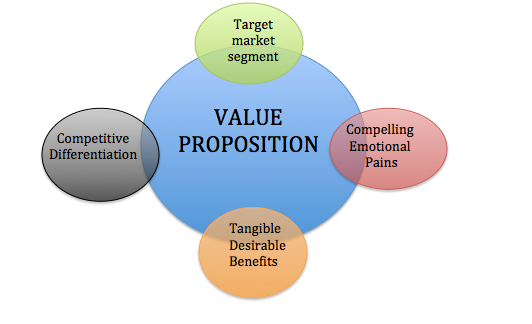Value Driven Advertising: What is it, Benefits & Examples
In today’s competitive and ever-evolving market, brands are constantly seeking ways to stand out, connect with their target audience, and drive meaningful results.
At Social Think, we believe that value-driven advertising is the key to achieving these goals. By aligning your marketing efforts with your brand’s core values and communicating them authentically, you can build stronger relationships with your customers and create a lasting impact.
What is Meant by Value in Marketing?

Value in marketing refers to the perceived benefits and importance that a customer associates with a product, service, or brand. It goes beyond mere functionality and encompasses emotional, social, and aspirational aspects. When a brand effectively communicates and delivers customer value to its target audience, it establishes a strong competitive advantage and fosters customer loyalty.
What is Value-Based & Value Driven Advertising?

Value-based advertising is a strategic approach that focuses on highlighting the unique value proposition of a brand and aligning it with the values and needs of its target audience.
It goes beyond promoting product features and instead emphasizes the broader benefits and impact that a brand can have on its customers’ lives.
One way to capture your customers’ attention is to invest in value-based marketing. Value marketing focuses on how your product or services bring value to the customer.
Value-driven advertising takes this concept a step further by ensuring that the brand’s core values are consistently reflected across all marketing channels and touchpoints.
The Importance of Value-Driven Advertising

In today’s market, consumers are increasingly seeking brands that align with their values and beliefs. They want to support companies that not only provide quality products or services but also demonstrate a commitment to social responsibility, sustainability, and ethical practices.
Value-driven advertising allows brands to tap into this desire and establish a deeper connection with their target audience. By consistently communicating and demonstrating their values, brands can build trust, credibility, and loyalty among their customers.
Key Elements of Value-Driven Advertising
Identifying Core Values
The foundation of value-driven advertising lies in clearly defining your brand’s core values. These values should reflect your company culture, mission statement, and the unique qualities that set you apart from competitors.
Take the time to carefully consider what your brand stands for and how it can make a positive impact on your customers and society as a whole. This will not only attract high-quality leads, but also help you build a strong and loyal customer base.
Creating Authentic Messaging
Once you have identified your core values, it’s important to develop authentic messaging that effectively communicates them to your target audience. Your marketing content should be genuine, relatable, and aligned with your brand’s voice and personality.
Avoid using generic or insincere language, and instead focus on creating messages that resonate with your customers on a deeper level, showcasing the authenticity of your brand.
Demonstrating Commitment
Value-driven advertising goes beyond mere words; it requires a genuine commitment to living up to your brand’s values.
This means consistently including your values into all aspects of your business, from product development and customer service to your marketing campaigns and social media presence.
Demonstrating commitment through actions helps you establish credibility and trust with your target audience.
Building Emotional Connections
Effective value-driven advertising creates an emotional connection with your customers. It taps into their desires, aspirations, and pain points, and shows how your brand can positively impact their lives.
A simple way to connect with your audience is by telling engaging stories and using emotional visuals. This helps build a strong connection.
How is a Value Proposition Different than a Unique Selling Proposition?

While a unique selling proposition (USP) focuses on the specific features or benefits that differentiate a product or service from its competitors, a value proposition takes a broader approach.
A value proposition encompasses the overall promise of value that a brand delivers to its customers. It considers not only the functional aspects but also the emotional and aspirational benefits that a brand offers.
In essence, a value proposition is the sum total of the reasons why a customer should choose your brand over others.
Why You Need to Start Value Proposition Marketing?

In today’s market, simply having a great product or service is not enough to stand out. Customers are bombarded with countless options and marketing messages, making it challenging for brands to capture their attention and loyalty.
Value proposition marketing allows you to cut through the noise and clearly communicate the unique value that your brand brings to the table, making it essential for attracting prospective customers.
Focusing on your value proposition allows you to attract the right customers who are more likely to appreciate and engage with your brand. This targeted approach leads to higher conversion rates, increased customer satisfaction, and improved brand loyalty.
Additionally, by consistently delivering on your value proposition, you can differentiate yourself from competitors and establish a strong brand identity in the minds of your target audience.
Benefits of Value-Based Advertising
Value-based advertising offers numerous benefits for brands looking to make a lasting impact in today’s market.
Some of the key advantages include:
- Increased Brand Loyalty: By aligning your advertising efforts with your brand’s core values, you can foster a deeper connection with your target audience. Customers are more likely to remain loyal to brands that share their values and consistently demonstrate a commitment to them.
- Enhanced Brand Image: Value-driven advertising helps establish your brand as authentic, trustworthy, and socially responsible. By communicating your values effectively, you can improve your brand’s reputation and attract customers who appreciate and support your mission.
- Differentiation from Competitors: In a crowded market, value-based advertising allows you to stand out from the competition. By highlighting your unique value proposition and the broader impact of your brand, you can differentiate yourself and capture the attention of your target audience.
- Improved Customer Engagement: Value-driven advertising often sparks meaningful conversations and encourages customer engagement. By touching on topics that matter to your audience, you can create opportunities for dialogue, feedback, and user-generated content, which can further strengthen your brand’s relationship with its customers.
- Increased Customer Lifetime Value: When customers feel a strong connection to your brand’s values, they are more likely to remain loyal over time. This increased loyalty translates into higher customer lifetime value, as satisfied customers are more likely to make repeat purchases and recommend your brand to others.
Examples of Value Driven Advertising
- Patagonia: Known for its commitment to environmental sustainability, Patagonia consistently includes its values into its advertising campaigns. From promoting eco-friendly materials to encouraging customers to repair and recycle their gear, Patagonia’s marketing efforts align with its core mission of protecting the planet.
- Dove: Dove’s “Real Beauty” campaign is a prime example of value-driven advertising. By challenging traditional beauty standards and promoting self-esteem and body positivity, Dove has successfully connected with its target audience on a deeper level and established itself as a brand that champions real women.
- Nike: Nike’s “Just Do It” campaign has become synonymous with the brand’s values of determination, perseverance, and athletic excellence. By featuring inspiring stories of athletes overcoming adversity, Nike’s advertising resonates with its target audience and reinforces its position as a brand that empowers individuals to reach their full potential.
FAQ’s:
How Can Value-Driven Advertising Benefit a Company’s Brand Image?
Value-driven advertising can significantly enhance a company’s brand image by showcasing its commitment to its core values and social responsibility. When a brand consistently communicates and demonstrates its values through its advertising efforts, it builds trust, credibility, and loyalty among its target audience. Customers are more likely to perceive the brand as authentic, reliable, and aligned with their own values, leading to a positive brand image and reputation.
How Can a Brand Identify its Core Values?
Identifying a brand’s core values requires introspection and a deep understanding of the company’s mission, culture, and unique qualities.
Start by examining your company’s history, founding principles, and the reasons behind its existence. Consider what sets your brand apart from competitors and what impact you want to make on your customers and society as a whole.
Engage your team members, stakeholders, and customers to gain insights into what they perceive as your brand’s core values. Through this process, you can distill your values into a clear and concise set of guiding principles that will inform your advertising efforts.
Can Value-Driven Advertising Be Effective For All Types of Businesses?
Yes, value-driven advertising can be effective for businesses of all sizes and industries.
Whether you’re a small local business or a large multinational corporation, aligning your advertising efforts with your core values can help you connect with your target audience on a deeper level.
The key is to identify values that resonate with your specific customer base and find authentic ways to include them into your marketing strategies.
By consistently communicating and demonstrating your values, you can establish a strong brand identity and build lasting relationships with your customers.
How Can Small Brands Implement Value-Driven Advertising Effectively?
Small brands can effectively implement value-driven advertising by focusing on their unique strengths and authentic storytelling. Start by clearly defining your brand’s core values and understanding how they align with your target audience’s needs and aspirations.
Craft messaging that showcases your brand’s personality and the impact you want to make. Utilize cost-effective marketing channels such as social media, content marketing, and email marketing to consistently communicate your values and engage with your audience.
Collaborate with influencers or partner with local organizations that share your values to expand your reach. By staying true to your values and finding creative ways to showcase them, small brands can make a big impact with value-driven advertising.
Can Value-Driven Advertising Lead to Increased Customer Loyalty and Trust?
Absolutely! Value-driven advertising has the power to forge strong emotional connections with customers, leading to increased loyalty and trust.
When a brand consistently demonstrates its commitment to its core values through its advertising efforts, customers feel a deeper sense of alignment and shared purpose. They perceive the brand as authentic, reliable, and worthy of their support.
How Can Companies Ensure That Their Values Align With Their Advertising Messages?
To ensure that a company’s values align with its advertising messages, it’s essential to have a clear understanding of the brand’s core values and a commitment to consistently include them into all marketing efforts.
This requires a collaborative approach involving key stakeholders, including the marketing team, leadership, and employees across various departments. Regular audits and reviews of advertising campaigns should be conducted to assess their alignment with the brand’s values.
Customer feedback and market research can also provide valuable insights into how well the brand’s advertising resonates with its target audience.
Can Value-Driven Advertising Backfire If Not Executed Properly?
Yes, value-driven advertising can backfire if not executed properly. Inauthentic or inconsistent messaging can come across as insincere or opportunistic, damaging the brand’s reputation.
It’s important for brands to genuinely embody their values and avoid jumping on social or political bandwagons solely for marketing purposes.
Brands must also be prepared to back up their value-driven advertising with real actions and initiatives that demonstrate their commitment. Failing to live up to the values promoted in advertising can lead to accusations of hypocrisy and erode customer trust.
To mitigate these risks, brands should ensure that their value-driven advertising is authentic, consistent, and aligned with their overall business practices.
Conclusion
In today’s market, value-driven advertising has become a powerful tool for brands looking to connect with their target audience on a deeper level.
At Social Think, we specialize in helping brands unlock the power of value-driven advertising through our expertise in social media strategy, analytics, and insights.
Our team of experienced marketers can guide you in identifying your brand’s core values, creating compelling messaging, and implementing effective marketing campaigns across various channels.
Don’t miss out on the opportunity to make a lasting impact with your advertising efforts.
Contact Social Think today to learn more about how we can help you leverage value-driven advertising to achieve your business goals and create a positive impact on your customers and society as a whole.







